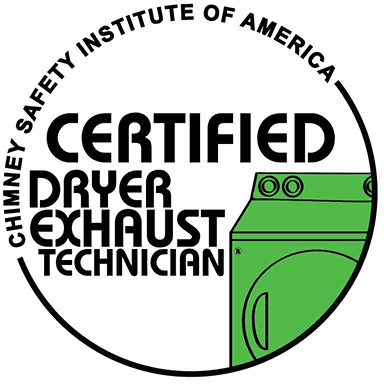The Benefits of Installing a Chimney Cap: Why You Should Invest in One
A chimney cap is an essential component of any chimney system, providing a number of benefits that make it a worthwhile investment. Chimney caps are designed to protect the chimney from the elements, preventing rain, snow, and debris from entering the chimney and causing damage. They also help to keep animals and birds from nesting in the chimney, which can cause blockages and other problems. In addition, chimney caps can help to improve the efficiency of the chimney by preventing downdrafts and increasing the draw of the chimney.
The first benefit of installing a chimney cap is that it helps to protect the chimney from the elements. A chimney cap acts as a barrier, preventing rain, snow, and debris from entering the chimney and causing damage. This can help to extend the life of the chimney and reduce the need for costly repairs. In addition, a chimney cap can help to prevent animals and birds from nesting in the chimney, which can cause blockages and other problems.
Another benefit of installing a chimney cap is that it can help to improve the efficiency of the chimney. A chimney cap can help to prevent downdrafts, which can cause smoke to enter the home instead of exiting through the chimney. In addition, a chimney cap can help to increase the draw of the chimney, which can help to improve the efficiency of the fireplace.
Finally, a chimney cap can help to reduce the risk of a chimney fire. A chimney cap can help to prevent sparks from escaping the chimney and igniting nearby combustible materials. This can help to reduce the risk of a chimney fire, which can be a costly and dangerous event.
In conclusion, installing a chimney cap is a worthwhile investment that can provide a number of benefits. A chimney cap can help to protect the chimney from the elements, prevent animals and birds from nesting in the chimney, improve the efficiency of the chimney, and reduce the risk of a chimney fire. For these reasons, it is highly recommended that homeowners invest in a chimney cap for their chimney system.
How to Choose the Right Chimney Cap for Your Home
When it comes to protecting your home from the elements, a chimney cap is an essential component. Not only does it keep out rain, snow, and debris, but it also prevents animals from entering your chimney. Choosing the right chimney cap for your home can be a daunting task, but with the right information, you can make an informed decision.
First, consider the size of your chimney. Chimney caps come in a variety of sizes, so it’s important to measure the opening of your chimney before making a purchase. If you have a masonry chimney, you’ll need to measure the inside dimensions of the flue. If you have a prefabricated chimney, you’ll need to measure the outside dimensions of the flue.
Next, consider the material of the chimney cap. Most chimney caps are made of either stainless steel or galvanized steel. Stainless steel is more durable and resistant to rust, while galvanized steel is less expensive but more prone to rusting.
Finally, consider the type of chimney cap you need. There are several different types of chimney caps, including spark arrestors, multi-flue caps, and single-flue caps. Spark arrestors are designed to prevent sparks from escaping the chimney, while multi-flue caps are designed to cover multiple flues. Single-flue caps are designed to cover a single flue.
By taking the time to consider the size, material, and type of chimney cap you need, you can make an informed decision and choose the right chimney cap for your home. With the right chimney cap in place, you can rest assured that your home is protected from the elements and unwanted visitors.
A Step-by-Step Guide to Installing a Chimney Cap Yourself
Installing a chimney cap is an important part of maintaining the safety and efficiency of your chimney. A chimney cap helps to keep out debris, animals, and moisture, and can also help to prevent downdrafts. Installing a chimney cap yourself is a relatively simple process that can be completed in a few hours.
Step 1: Measure the Chimney
The first step in installing a chimney cap is to measure the chimney. Measure the length, width, and height of the chimney opening. This will help you determine the size of the chimney cap you need to purchase.
Step 2: Purchase the Chimney Cap
Once you have the measurements of your chimney, you can purchase the appropriate chimney cap. Make sure to purchase a cap that is the correct size for your chimney.
Step 3: Prepare the Chimney
Before you install the chimney cap, you will need to prepare the chimney. Remove any debris or obstructions from the chimney opening. Make sure the surface of the chimney is clean and free of dirt and debris.
Step 4: Install the Chimney Cap
Once the chimney is prepared, you can begin to install the chimney cap. Place the cap on top of the chimney and secure it with screws. Make sure the cap is firmly attached to the chimney.
Step 5: Seal the Chimney Cap
Once the chimney cap is installed, you will need to seal it. Use a high-temperature silicone sealant to seal the edges of the cap. This will help to ensure that the cap is airtight and will keep out debris, animals, and moisture.
Step 6: Test the Chimney Cap
Once the chimney cap is installed and sealed, you should test it to make sure it is working properly. Light a fire in the fireplace and check to make sure the smoke is being drawn up the chimney. If the smoke is not being drawn up the chimney, you may need to adjust the cap.
Installing a chimney cap is an important part of maintaining the safety and efficiency of your chimney. By following these steps, you can easily install a chimney cap yourself in a few hours.











